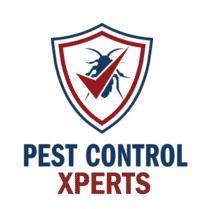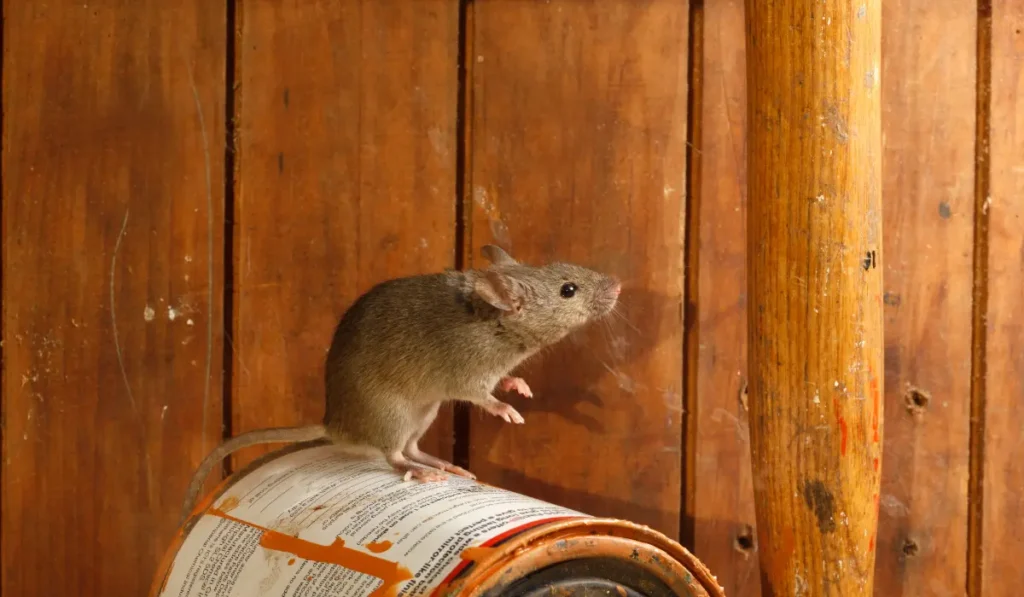Complete Mouse Removal in Binghamton
Serving residences and businesses throughout Binghamton, Vestal, Johnson City, Endicott, Endwell, Windsor, Whitney Point, Owego, and Apalachin.
Mice are small, agile and relentless. A single mouse can flatten its ribs to fit through a gap the width of a pencil and chew through wood plastic or drywall in search of warmth and food. Once inside it contaminates stored products, it leaves droppings that trigger allergies and gnaws electrical wiring that can create fire risk. When you see one mouse dash across a kitchen floor or warehouse aisle many more are already nesting unseen behind walls or ceiling insulation. Pest Control Xperts provides thorough mouse removal and prevention throughout New York’s Southern Tier. Our local exterminator team pairs detailed inspection with proven trapping exclusion repairs and clear sanitation guidance to keep properties in Binghamton and the surrounding communities mouse free through every season.
Valley Climate and Building Styles Invite Rodents
Binghamton occupies a river valley where the Chenango meets the Susquehanna. Evening fog and river humidity settle into low yards and foundation drains creating constant moisture that supports insect prey which attracts hungry mice. Spring brings snow melt and frequent rain that raises water tables and forces field mice to higher ground often into basements and crawl spaces. Summer temperatures climb into the middle eighties while nights hover near sixty so rodents forage along fence lines and commercial dumpsters long after dusk.
Winter brings heavy lake effect snow yet deep freezes rarely last more than a week. Furnaces inside century old brick buildings downtown and modern ranch homes in the suburbs keep interior wall cavities near seventy degrees year round. Warm shelter plus easy access to food means mice can reproduce every twenty one days even while snow piles outside.
Many structures in Vestal, Johnson City and Endicott date to earlier manufacturing booms. Their fieldstone and brick foundations show wear that creates entry points around pipes and utility conduits. Newer slab on grade construction in Endwell and Windsor often leaves small expansion gaps around water lines that pass directly into pantry walls. Both old and new designs become attractive once mice detect warmth and scent trails.
Mouse Species Common in the Southern Tier
Species | Key traits | Preferred hideouts | Primary risks |
House mouse | Gray brown coat large ears tail matches body length | Range insulation pantry voids drop ceilings | Food spoilage allergen spread |
Deer mouse | Two tone fur white belly sharply banded tail | Attic storage sheds detached garages | Rare hantavirus carrier |
White footed mouse | Rusty back white feet likes wooded edges | Crawl spaces firewood piles utility closets | Gnaws wires leaves droppings |
Field mouse | Similar to deer mouse found in lawns and gardens | Garage corners basement shelves | Rapid entry when weather cools |
Correct species confirmation helps Pest Control Xperts choose the best bait flavor trap style and follow up schedule for lasting success.
Signs of a Mouse Infestation
- Droppings shaped like dark rice grains along baseboards or pantry shelves
- Scratching sounds in walls or ceiling voids especially just after sunset
- Gnaw marks on plastic food bags cardboard or soap bars under sinks
- A stale smell coming from enclosed cabinets or attic corners
- Smudge marks of grease along wall surfaces where mice run the same route night after night
If you notice any single sign a professional inspection is wise because colonies multiply quickly once nesting inside undisturbed insulation.
Health Property and Business Hazards
- Food contamination happens when droppings and urine touch cereal sugar and restaurant prep stations.
- Allergens from shed hair and dander circulate through air ducts worsening asthma for children and older adults.
- Electrical shorts start when gnawing removes insulation from copper wires and can ignite fires in attic rafters.
- Water leaks appear after mice chew plastic supply lines inside walls leading to hidden mold growth.
- Reputation damage grows when patrons record a mouse crossing a dining room or when tenants post pictures online.
Prompt removal limits these costly outcomes.
Pest Control Xperts Five Step Mouse Removal Process
Detailed Inspection
A certified exterminator meets residents or managers to discuss recent sightings, sanitation habits, pet feeding routines and building history. High luminosity flashlights reveal grease rub marks on baseboards. Fluorescent tracking dust may be applied at strategic points to map overnight movement. The technician checks attics, crawl spaces, drop ceilings, garage corners and external utility openings. Findings are photographed and added to a digital floor plan delivered the same day.
Custom Control Strategy
- Snap traps and multi capture devices are placed along runways behind appliances and inside attics. They are secured in lock boxes when children or pets are present.
- Bait stations anchored outside reduce population pressure along fence lines, trash pads and loading bays. Only professional grade bait that remains palatable in valley humidity is used.
- Exclusion repairs close entry gaps with steel mesh copper wool concrete patch or heavy gauge door sweeps. Technicians seal cracks around pipe penetrations window frames and garage door edges until no light shows through.
- Sanitation checklist covers nightly crumb sweeping dry goods in sealed containers, quick cardboard disposal and prompt grease tray cleaning. Removing food and water supports long term success.
Follow Up Verification
Gestation for a mouse is just three weeks. Pest Control Xperts returns in ten to fourteen days to record trap captures, refresh bait and photograph sealed points. Follow-ups continue until two consecutive visits show no new droppings, chew marks or captures. Progress data appears in the client portal with easy to read trend graphs.
Maintenance Service
Quarterly exterior checks keep bait fresh and inspect exclusion points that wear over time. Annual attic assessments verify insulation remains intact. Properties near woodlots in Windsor or close to campus housing in Vestal often adopt bi monthly service due to higher pressure.
Seasonality Overview
- Early Spring Melt water forces field mice from burrows into warm crawl spaces.
- Summer Ample food outside slows indoor incursions but roof vent gaps invite attic nesting.
- Autumn First cool nights drive deer mice and white footed mice through gaps in garage weather strips.
- Winter Heavy snow removes natural food so house mice become active in basements kitchens and restaurant dry storage. Heated interiors allow continuous breeding.
Scheduling inspection before each seasonal shift prevents surprise infestations.
Local References Without Specific Street Detail
The valley includes a busy downtown business district, university campuses, suburban neighborhoods, light industrial parks and rural properties. Each setting presents unique rodent challenges from aging foundation stone in historic blocks to exposed slab joints in recent warehouse builds. Pest Control Xperts tailors plans to suit high foot traffic areas, small family homes and agricultural structures alike.
Why Choose Pest Control Xperts
- Regional knowledge built from years of Broome County service tracking rainfall moisture levels and building trends.
- Integrated approach blends trapping bait exclusion sanitation and client education for durable control instead of temporary relief.
- Transparent reports with time stamped photos material data and service diagrams accessible through a secure online portal.
- Flexible scheduling offers sunrise evening and weekend appointments that fit restaurant prep cycles, school hours and work from home routines.
- Cost effective prevention plans save money over repeated emergencies and help maintain five star property reviews.
Everyday Prevention Tips
- Store grains, pasta and pet kibble in rigid containers with tight lids.
- Sweep kitchen floors nightly and pull out stoves monthly to vacuum crumbs behind appliances.
- Recycle cardboard quickly instead of stacking boxes where mice can nest.
- Trim vegetation to keep shrubs at least twelve inches away from siding so sunlight dries soil.
- Repair leaking outdoor taps and condensation lines to eliminate water sources.
- Place trash bins several feet from door thresholds and keep lids closed.
- Inspect attic and crawl space vents twice a year for holes or torn mesh.
- Stack firewood on racks eighteen inches above soil and twenty feet from walls.
- Seal cable and pipe holes with copper mesh and exterior grade sealant.
- Schedule a professional Binghamton pest control inspection each spring before peak breeding begins.
Frequently Asked Questions
How long until my home is mouse free
Most single family homes reach zero captures in three to four weeks when all sanitation and exclusion steps are followed. Commercial kitchens with abundant food may need six weeks.
Are traps safe around pets or children
Indoor devices are placed in secured boxes or out of reach behind equipment. Outdoor bait stations lock and anchor so only a technician can open them.
Do we need to vacate during service
No. All work occurs in structural voids or inside secure stations. Occupants can remain onsite while technicians work.
Contact Pest Control Xperts Today
Droppings on pantry shelves gnaw marks on cereal bags and late night scratching in ceiling joists signal an active mouse colony. Waiting allows rodents to multiply chew wiring and spread allergens. Pest Control Xperts stands ready with prompt effective mouse removal in Binghamton Vestal, Johnson City, Endicott, Endwell and Windsor. Our exterminator team inspects each corner, seals practical entry points, captures existing rodents and shares prevention steps tailored to Southern Tier living. Contact us Today to schedule a comprehensive evaluation or enroll in a maintenance plan that keeps your property mouse free in every season.





